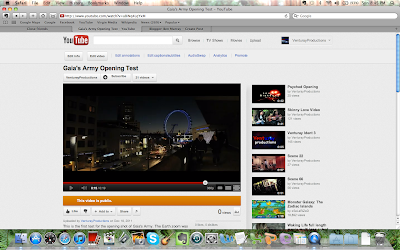Extras Analysis
Mis-En-Scene
The character played by Orlando Bloom has two main parts. Firstly, the Lawyer, who possibly has martial issues. He is attractive and smart, and about to lay down the final case-changing theory which is interrupted by his wife’s objection to a trivial matter. After a small bicker over this matter the judge demands that he and his wife both kiss, bringing the Lawyer’s narrative to a happy ending. Orlando’s other role is as himself; stuck up, famous, signing autographs. He also degrades Johnny Depp to build his own image. He comes across as though the stardom and being constantly chased by ‘birds’ had clearly got to his head, giving Orlando and other famous people a negative connotation.
The lawyer’s wife is clearly upset with her husband because the only time he sent her flowers was during her mother’s death. She brings this trivial matter into court as part of the comedy narrative.
Slow, northern accent, and an extra, Karen proves not a great friend as she fails to help Ricky. She also breaks the usual female stereotype in a famous good looking celebrity’s presence – she thinks he’s only famous for his famousness, not his looks. She is also portrayed as bored, as most extras are. Slouching body language along with looking all around the courtroom instead of at the action shows this character’s boredom (which she has due to her role as an extra rather than a speaking character). Her facial expression also reads out signs of being bored.
Ricky is (unusually for a famous person) depicted nervous and uncertain about the sitcom he is about to start filming, and looks for help but can’t find it. He is sarcastically honest. During his phone call we see sadness, confusion and mild frustration at his face.
Stephen, Ricky’s agent, is tall, nerdy, not caring and unhelpful to Ricky, and even finds a replacement for Ricky.
The courtroom – portrayed both as a courtroom in television drama and then as a real life set. This includes the lawyer’s table, dark wood panelling everywhere, the Jury, the Judge’s seat, the defendant’s chair are all present, as are the correct dress codes for each character. Extras are in both versions, as is Orlando (although with different personalities). In the set version, cameras, sound engineering lights and crew all present aswell. Costumes are also usual, Jury in suits and lawyers in their wigs and dress code. When the two kiss in the courtroom set, the jury and lawyers applaud as lighting glows warm orange around the two.
The set is a colder light, and it is this change from colour-temperature-orange to colour-temperature-blue which makes it most clear the transition from the narrative to the set. The courtroom also looks considerably smaller as a set, and is equipped with an ‘Orlando Bloom’ chair. The set is made with what looks like panelled wood all over the place.
Ricky’s sitcom set is very studio-like, bland, with technical gear everywhere. A wooden box contains the set (within the set for this scene) and Ricky is sitting in his chair. His agent and replacement appear standing before Ricky, and their height over him may suggest some level of power between Ricky and his agent.
SOUND
Music is first tense and suspenseful, however when Orlando’s wife interrupts music becomes comedy-like and associated with romantic comedy. When the two kiss, music becomes unbearably cheesy and climatic. The whole piece is composed with a string orchestra, which allows all kinds of emotions. Also apart from the sound of actor’s footsteps, the judge’s hammer and people’s voices in this scene, everything is completely silent.
However when we switch over to the ‘set’ set, the sounds switch as all sound becomes realistic. Obviously there is no music, as the show imitates real life and real life does not come with a soundtrack. Heard constantly in the background are voices over megaphones and radios, loud bands and other obscure loud noises as parts of set are moved around, bells ringing as the director calls cut and the sound of orders being passed from members or crew to other members of crew are also present.
CAMERA
All typical angles used – tracking, panning, two shots, three person shots, establishing and long shots, mid shots, medium close ups, cutaways close ups, and reaction/reverse shots for all dialogue. As the majority of ‘Extras’ is presented as though it were real life, the camera’s angles are all very standard and subtle, deliberately not artistic and avoid overdosing on very exciting visual content to make the viewer forget they are watching what appears to be real life, even though this real life in itself is also a set.
EDITING
The cuts are fairly slow, although during dialogue the shot-reverse-shot method is employed, which means the cuts the one actor to another is sped up so whichever actor is speaking has a shot. The title, ‘Extras’, is also briefly flashed up in a simple non-moving logo brought in with GCI, entering and exiting with a cut to black, cross dissolving in, and then cutting back to the show. The editors have overlaid the logo with a wild track of people talking in the set.




































